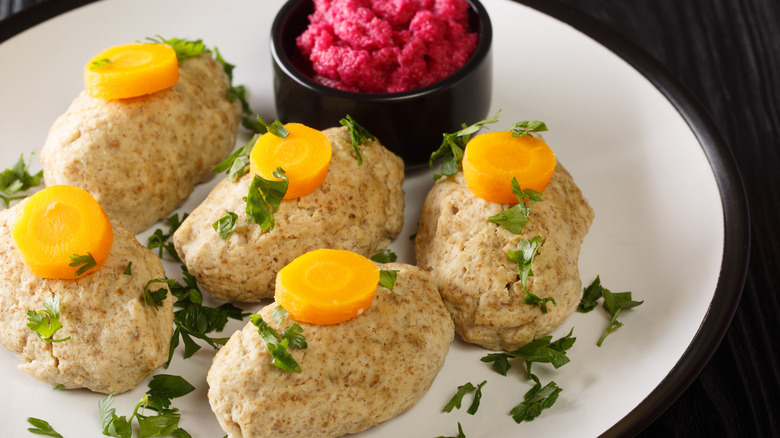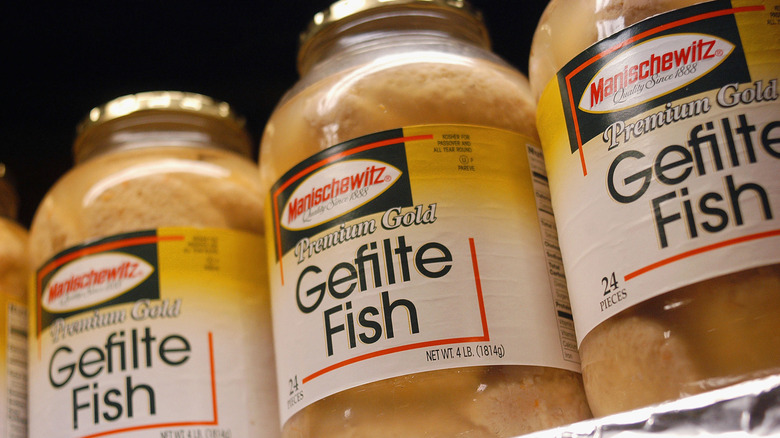The Absolute Best Fish To Use For Traditional Homemade Gefilte Fish
We may receive a commission on purchases made from links.
There's one dish that shows up on Jewish families' plates for almost every holiday but is a puzzle to almost everyone at the table: Gefilte fish. Whether it's homemade or (pardon the pun) fished out of a jar, the key ingredient — fish — is often a mystery. Gefilte, after all, is not a species of fish and the jars' front label rarely calls out the type in the jar. The answer is found in knowing that the dish was originally created in Central and Eastern Europe, where most of the fish available was from freshwater and the prevalent species were pike, carp, and whitefish. So it's no surprise that then, as now, gefilte fish was generally made with one or two of those fish or a combination of all three.
Why is it called gefilte if there is no fish with that name? Gefilte is a Yiddish term that means stuffed. When the dish was first created 700 or so years ago, the fish's meat was stripped from the bones and ground with a combination of spices, vegetables, eggs, and breadcrumbs or flour made from ground matzoh before being stuffed back into the skin of the fish. Today, the mixture is shaped into fist-sized ovals and poached in a broth or placed in a loaf pan and baked. It can even be cooked in a white wine-herb broth known as court bouillon or purchased premade in jars.
The fish used in gefilte depends on who is making it
Some generations of Jewish children got their first clue about which fish their family preferred after finding a carp swimming in their great-grandparents' bathtub. In the early twentieth century, Jews desiring fresh fish for their gefilte preparation often purchased a carp a few days before they planned on making it. Without much refrigeration available, they kept the fish alive by allowing it to swim in their bathtub for a few days. The practice was so seared in kids' memories that there is even a children's book about it called, appropriately, "The Carp in the Bathtub."
However, perhaps the biggest clue as to which fish was used and how it was prepared often depended on where people were from. Pike, a gentle-flavored fish, became the most commonly used fish in Central Europe since it was the most prevalent freshwater fish in Germany. In Poland, carp, another delicate fish, and/or the strong-flavored whitefish were more common. The Jewish population in the United Kingdom, on the other hand, had more access to saltwater and thus used cod or haddock. Whether or not you liked your gefilte fish sweet, peppery, or cooked with beets depended on where you were from. Those from southern Poland and northern Ukraine, living near sugar beet factories, preferred it sweet, while Lithuanians opted to sprinkle theirs with black pepper. Germans served gefilte fish with vinegar or mayonnaise but Eastern Europeans served it with the hot, spicy horseradish – a sauce that remains the condiment of choice for gefilte fish to this day.
So while there's technically no right or wrong answer when it comes to selecting the best fish for your homemade gefilte fish, if you want to stick to tradition, opt for the commonly used carp, whitefish, and/or pike.

